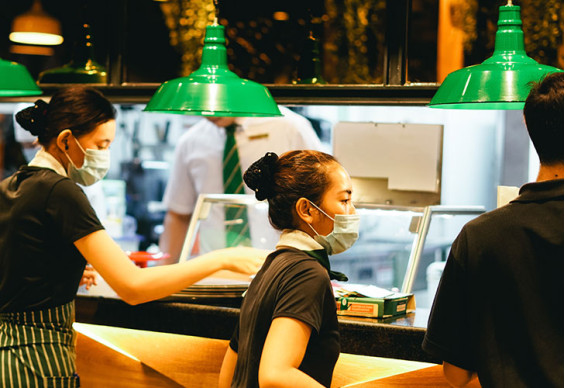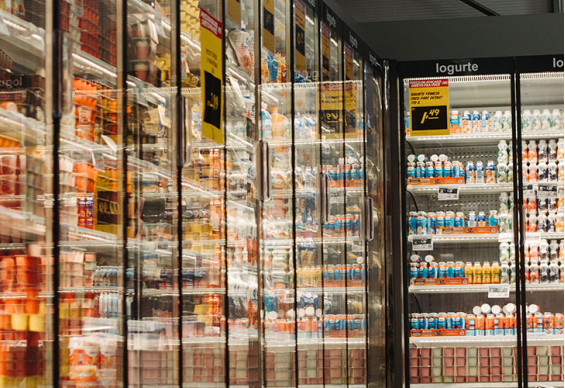Cashflow management tips for Restaurant business

Look at the any aspect of your business, if you do not manage it properly, sooner or later it is going to create chaos. Over a period of 10 years of our career in the field of accounts and finance, we have observed that cash crunch does not always result because of non-availability of cash, most of the time it is the result of mismanagement of cash. When it comes to Restaurant business, it becomes very important to have a close watch on cashflow and to do a periodic review of the same. This is because there are few important aspects of Restaurant operations wherein if we fail to manage it efficiently, it will straight away impact cashflow of the business.
Have a look at the following key factors while managing restaurant operations. If we pay close attention to these factors and plan things properly, we will never run into a situation of cash crunch.

Food cost is one of the major direct costs in Restaurant business. The major challenge associated with the food is that it is perishable in nature and it becomes very important to control food wastage. This is very critical aspect because on one hand, we need to make sure that we do not face shortage of food products when sales are on pick, while on the other hand, we need to make sure that we do not end up stocking excess food products ultimately resulting to wastage. Also, it is a fact that there is no way to avoid food wastage in restaurant business, but the good thing is that if we take proper steps, we can control it.
We can take following steps to control food wastage.
-
Buy on need basis
This is the simplest and most effective step to follow. Get into habit of ordering food on need basis and this will help to control food wastage to a great extent.
-
Inventory of daily food wastage
Ask your chef to maintain Inventory of daily food wastage. We can analyze this data on a weekly basis and accordingly can take necessary steps while placing orders for food products to avoid excessive stocking.
-
Use items on FIFO basis
Make sure your chef is using food items on FIFO basis. Many a time it happens that food items ordered earlier is already in stock and chef may end up using newly ordered food items leaving old food items unused which is going to perish in a day or two.
-
Efficient use of storage system
Have a proper storage system in place and make sure it is being used efficiently. At the end of the day, chef needs to make sure that remaining food items for the day have been placed back to proper storage.
Also, make sure raw meat is not stored close to vegetables or other food products. Bacteria from raw meet can contaminate other food products which will make other food products vulnerable for health if consumed.
Cleanliness is another major factor. Make sure your storage / kitchen area is cleaned properly on a regular basis. This will not only take care of hygiene but will also help to control spoilage of food.
-
Inspecting Food orders
Inspect food orders while you receive. Make sure you have not received spoiled batch of food which you may have to dispose of without using.
-
Set correlation between menu items and grocery list
Figure out what food you will need to prepare number of dishes in menu items. How many food items are already in inventory and what fresh orders you will need to place.
-
Temperature check
Make sure temperature of your pantry is constant. Fluctuating temperature will lead to food spoilage.
-
Offer Discounts
If you have food items which are going to perish in a day or two, you can offer discounts on menu items which are prepared using these food items.
-
Make your team responsible
Encourage your team to have same ethics and be sensitive to food wastage. When you are trying to achieve something at an organizational level, it is never a single person’s job. Everyone within the team need to make conscious efforts and only then you will notice changes at ground level.

Payroll is another big cost in restaurant business and it’s very essential to control the same. Restaurant
sales are not same throughout the week. It may be on lower side at the start of the week and then will
be on pick during weekends. Also, need of labor also keeps fluctuating. It would be on a higher side when
you have some events organized, while during normal days, you might need less manpower.
Following are few tips to control payroll cost:
- Keep direct labor on an hourly basis rather than paying them fixed pay.
- Hire Interns, as you will get the fresh talent at much more cheaper pay rate. At the same time, Interns tend to work really hard to prove their capabilities at the start of their career.
- Hire third party labor contractor to meet manpower requirement on days of events.
- Analyse your sales Vs payroll cost on a weekly basis and make sure your payroll numbers correspond with sales numbers. If it doesn’t correspond, corrective measures need to be taken.

It makes no sense if cash is stuck into an inventory which is not moving quickly. That’s why it is very important to keep a track of inventory movement. This applies mainly to packaged food, Liquor and Beverages. We should not pile up items which are not ordered frequently.
Do an Audit of which Packaged food, liquor or beverage is in demand, which item is getting sold frequently and which item is occupying your storage for a longer period of time. This analysis will help you to place order for items that are frequently ordered and will ultimately help you to keep your cash free from stocking unwanted inventory items.
At the same time, conducting regular Inventory audit also safeguards against theft of Inventory items, which is very common in Restaurant Industry.

Keep a close watch on credit granted by various vendors and make sure you are taking full advantage of the same. Restaurant vendors grants credit ranging from 7 days to 30 days. Categorize your vendors according to credit period offered by them and schedule payments accordingly. This is necessary because it helps you to prioritize important payments. For example, you can put aside a vendor who is due after couple of weeks and can focus on important payments like statutory dues or a payroll cost due immediately.

This happens a lot with most of the business owners wherein they end up confusing operating cash with the capital expenditure. Analyse how much operating cash you would need on hand on a weekly / monthly basis, set it aside and do not disturb the same. At times we might get attracted to the latest tools / software / equipment available in the market and end up spending operating cash on capex. This is the point when most of the business starts facing cash crunch. Investing in latest tools and technologies makes us efficient, however, such cost has to be well planned and budgeted and should not be at the cost of operating cash.

As discussed earlier, it’s very important to prioritize payments and plan them accordingly. Statutory dues like sales tax, use tax, CRT, TPT etc. should never be delayed to avoid cost like Interest and Penalty. Statutory dues become payable on a specific day in a month and thus it can be planned well in advance. We can set reminders to transfer funds to a bank account on a specific date and release the payment accordingly.

This is very simple yet very important tool that helps managing cashflow efficiently. Categorize your costs into fixed and variable and prepare budget accordingly. Plan how you are going to fund this money and allocate the same against budgeted expense.
However, one should keep in mind that preparing a budget itself is not enough. More important is to stick to a budget which is prepared. One should do a periodic (Weekly / Monthly) review of actual Vs budgeted expense and should do a variance analysis. If there are big variances, try to figure out what caused the same and how can we avoid the same in future. If we learn to do this efficiently, we would be in a much better position to manage cashflow in a way that we do not face cash crunch during routine operations.
We believe that when it comes to cashflow management, there is no rocket science. It’s all about a common sense. If we learn to anticipate cash in and cash out, and then plan things accordingly, we will never run into a cash crunch situation. If you are facing any challenges with your cashflow and you feel that you are never getting out of a cash crunch situation, MAYBE YOU DON’T NEED A CASH. INSTEAD, YOU NEED A RIGHT ADVICE. Feel free to reach out to us on our contact details and will be more than happy to get on a call and help you!!!!
